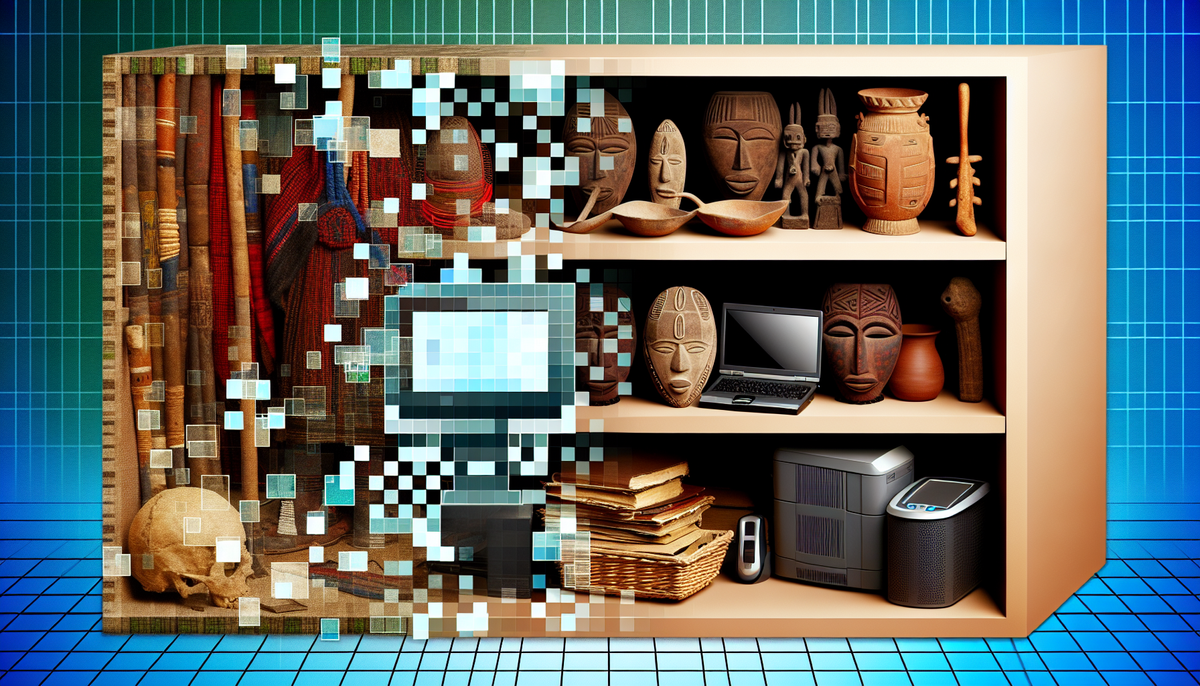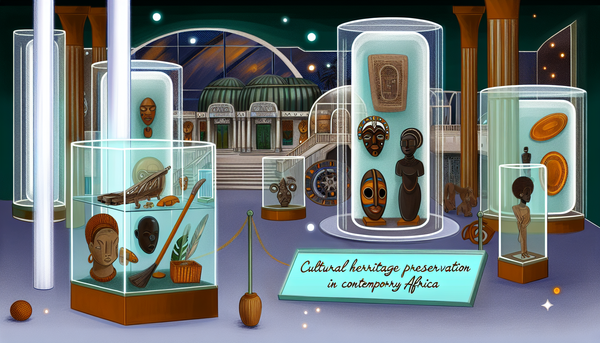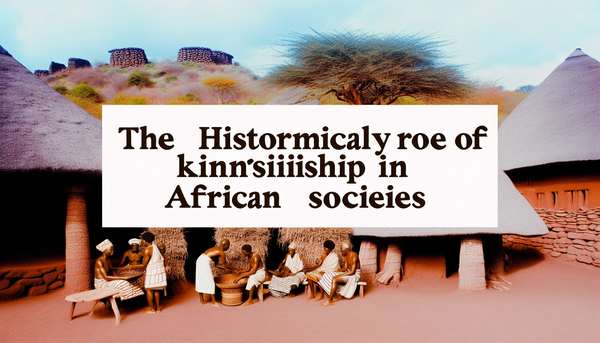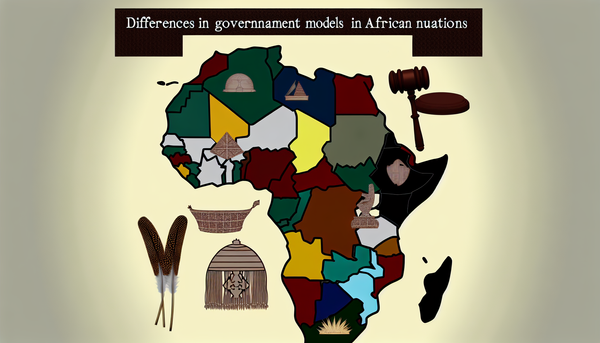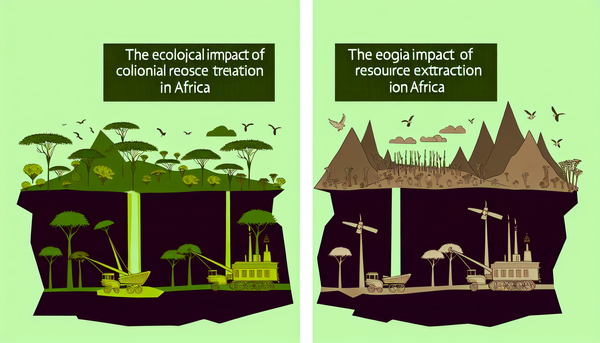### Introduction to the Historical Context and Technological Evolution
The documentation of African history has undergone significant transformations over the centuries, reflecting the continent's rich and complex heritage. Traditionally, African history was preserved through oral traditions, storytelling, and rituals, allowing communities to pass down knowledge and cultural practices from one generation to the next. While these methods were deeply rooted in societal structures, they also posed challenges, particularly regarding the preservation and accessibility of information.
With the advent of technology, the landscape of historical documentation began to shift dramatically. The introduction of writing systems, facilitated by early interactions with Arab traders and European colonizers, marked the beginning of a new era. As technology evolved, the invention of the printing press in the 15th century opened doors for broader dissemination of written works, though often primarily benefiting colonial narratives.
Today, we witness the dynamic integration of digital tools that are reshaping how African history is documented and shared. From digitization initiatives that preserve ancient manuscripts to online platforms that connect historians and communities, technology is redefining access to knowledge. This evolution not only acknowledges the past but also empowers future generations to explore and celebrate their identities through comprehensive, multifaceted historical frameworks.
### Digitizing Ancient Manuscripts and Artifacts
The digitization of ancient manuscripts and artifacts has emerged as a vital endeavor in the preservation and promotion of African history. Many historical documents, such as manuscripts from Timbuktu and artifacts that date back centuries, are often at risk of deterioration due to environmental factors, mismanagement, and conflict. By converting these invaluable resources into digital formats, institutions can safeguard cultural heritage and ensure that it remains accessible for future generations.
Digital archiving allows for high-resolution imaging and cataloging, providing researchers and the public with unprecedented access to materials that may have previously been hidden away in remote libraries or museums. Projects like the digitization of the Ethiopian Manuscript Microfilm Library and the creation of online databases for African artifacts showcase the potential of technology to bridge gaps in historical accessibility.
Furthermore, these initiatives facilitate collaborative research across continents, enabling scholars to contribute to a richer narrative of Africa's past. Digital access also democratizes knowledge, allowing individuals from various backgrounds to explore their heritage and engage with their history in innovative ways. Ultimately, the digitization of ancient manuscripts and artifacts plays a crucial role in not just preserving history but revitalizing it, unlocking new avenues for understanding and appreciation.
### Oral Histories and Digital Archiving
Oral history has long been a cornerstone of African cultural practices, serving as a powerful means of transmitting knowledge, traditions, and experiences. As societies evolve and modern challenges arise, the importance of capturing these narratives in digital formats has become increasingly urgent. Digital archiving of oral histories offers a unique opportunity to preserve the voices of elders, storytellers, and community leaders, ensuring that their legacies are not lost to time.
By utilizing technology such as audio recording, video documentation, and online platforms, we can create rich repositories of first-hand accounts that reflect the diverse realities and complexities of African life. These digital archives not only maintain the authenticity of oral traditions but also enhance accessibility, allowing people worldwide to engage with these stories. Projects like the StoryCorps initiative highlight how technology can bridge generational gaps and foster cross-cultural understanding.
Moreover, integrating oral histories with other digital resources, such as photographs and documents, offers an immersive approach to learning about the past. This multidimensional preservation method honors the contributions of individuals while also democratizing history, empowering communities to share their narratives on their terms. Through digital archiving, oral histories can continue to resonate, inspire, and educate future generations.
### GIS and Remote Sensing for Archaeological Discoveries
Geographic Information Systems (GIS) and remote sensing technologies have revolutionized the field of archaeology in Africa, enabling researchers to uncover historical sites and analyze landscapes with unprecedented precision. These tools provide the ability to visualize, analyze, and interpret spatial data, offering insights into the geographical contexts of ancient civilizations.
Remote sensing allows archaeologists to survey vast areas of land without extensive excavation. Satellite imagery and aerial photography can reveal patterns in vegetation, soil composition, and topography, often indicating the presence of archaeological features hidden beneath the earth's surface. For instance, LiDAR (Light Detection and Ranging) technology has successfully uncovered ancient settlements and monuments that were previously undetectable due to dense foliage or terrain obstacles.
GIS complements remote sensing by managing and analyzing the data collected, allowing experts to identify relationships and trends in archaeological findings. By layering various datasets, such as historical maps and environmental changes, researchers can reconstruct ancient human activities and migration patterns more accurately.
This synergistic approach not only enhances the understanding of Africa's archaeological heritage but also safeguards these sites for future study. Ultimately, the integration of GIS and remote sensing fosters a deeper appreciation of the continent's rich histories and helps promote conservation efforts.
### Impact of Social Media on Cultural Preservation
Social media has emerged as a powerful tool for cultural preservation in Africa, transforming how communities document and share their rich heritage. Platforms such as Facebook, Instagram, and Twitter facilitate the dissemination of cultural narratives, traditions, and practices, democratizing access to information and fostering a sense of community among diverse populations.
By sharing stories, photographs, and videos, individuals can highlight local customs, festivals, and historical landmarks that might otherwise remain underrepresented in traditional media. Hashtags and online campaigns have allowed marginalized voices to gain visibility, encouraging dialogues about identity and heritage while also attracting global attention to unique cultural expressions.
Moreover, social media platforms have fostered collaborations among artists, historians, and cultural activists, making it easier to organize events, workshops, and campaigns focused on cultural preservation. Initiatives like "Museum Selfie Day" or the "Heritage Through My Eyes" project illustrate how users can engage with and promote local heritage through creative expression.
However, while social media offers opportunities for preservation, challenges persist, such as the risk of cultural appropriation or commodification. Striking a balance is essential to ensure that online engagement serves to enhance, rather than dilute, the authenticity of African cultures. Overall, social media has the potential to play a critical role in the sustained visibility of cultural heritage across generations.
### Virtual Reality Experiences in African Museums
Virtual Reality (VR) technology is transforming the way African museums present their collections and engage with audiences. By creating immersive experiences, museums can take visitors on virtual journeys that transcend geographical and temporal boundaries. This innovative approach enhances understanding and appreciation of Africa's diverse cultural heritage, allowing users to interact with historical artifacts and environments in ways that traditional exhibits cannot replicate.
With VR, visitors can explore reconstructions of ancient cities, witness significant historical events, or experience the rituals and practices of various cultures firsthand. For instance, projects like the "African Virtual Museum" seek to preserve and present African art and history through engaging 3D simulations, providing educational content in an interactive format.
Moreover, VR experiences can greatly expand access to cultural heritage for individuals who cannot physically visit museums. This inclusivity is crucial for promoting awareness and appreciation of Africa's rich history on a global stage. Additionally, VR opens up new avenues for educational programs, targeting schools and communities to foster a deeper understanding of history and identity among younger generations.
Incorporating virtual reality into museum offerings not only enhances visitor engagement but also positions African museums at the forefront of technological advancements in cultural preservation and education.
### Future Prospects and Emerging Innovations
The future of cultural preservation in Africa is poised for significant advancements, driven by emerging innovations in technology. As digital tools continue to evolve, new methodologies are being developed to safeguard and promote the continent's rich heritage. One notable trend is the increasing integration of Artificial Intelligence (AI) and machine learning into preservation efforts. These technologies can analyze vast amounts of data, helping researchers identify patterns, predict deterioration of artifacts, and enhance cataloging processes for better accessibility.
Moreover, the rise of blockchain technology offers exciting prospects for the secure documentation of cultural artifacts and intellectual property. By providing a transparent and tamper-proof record, blockchain can help prevent the illegal trade of cultural heritage, ensuring that communities retain ownership of their histories.
Furthermore, the growth of participatory platforms allows local communities to engage actively in preservation efforts. Crowdsourcing initiatives enable individuals to contribute knowledge and resources, fostering a sense of ownership and stewardship over cultural heritage.
As collaboration between cultural institutions, technology developers, and communities strengthens, the potential to innovate will expand. Embracing these trends will not only empower African communities to sustain their cultural legacies but also enrich global appreciation for their invaluable contributions to humanity's collective history.
